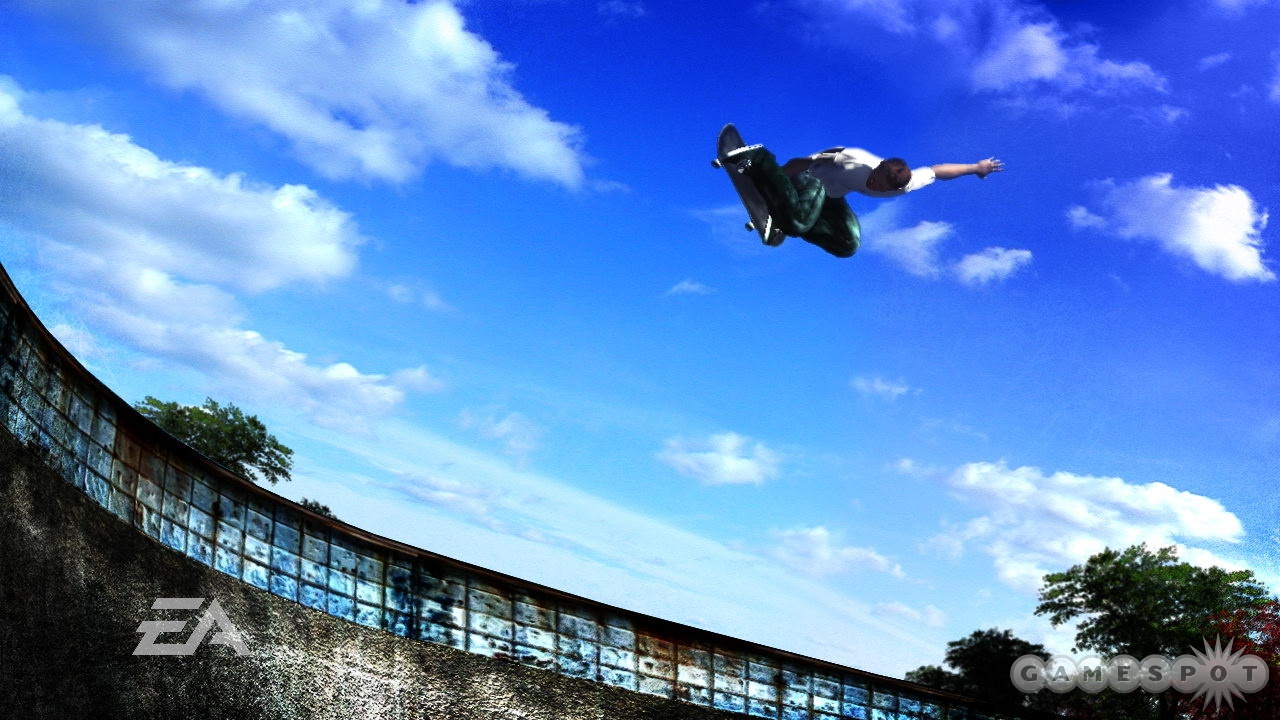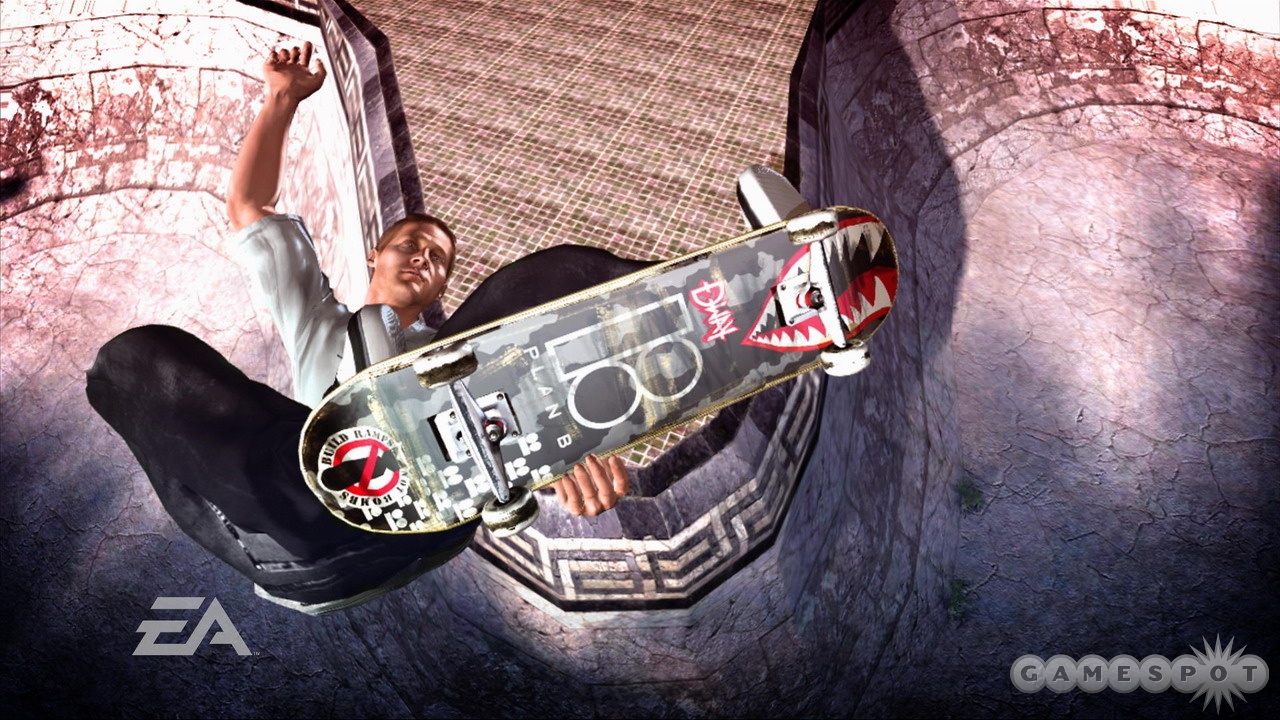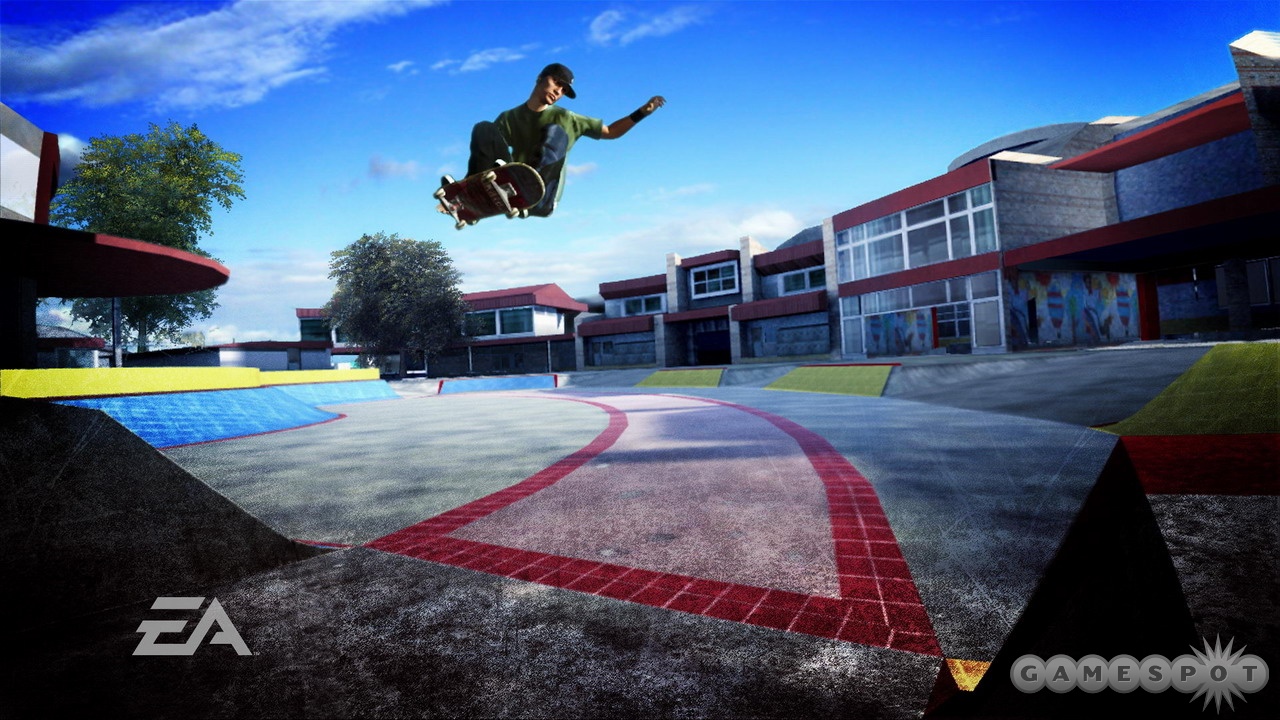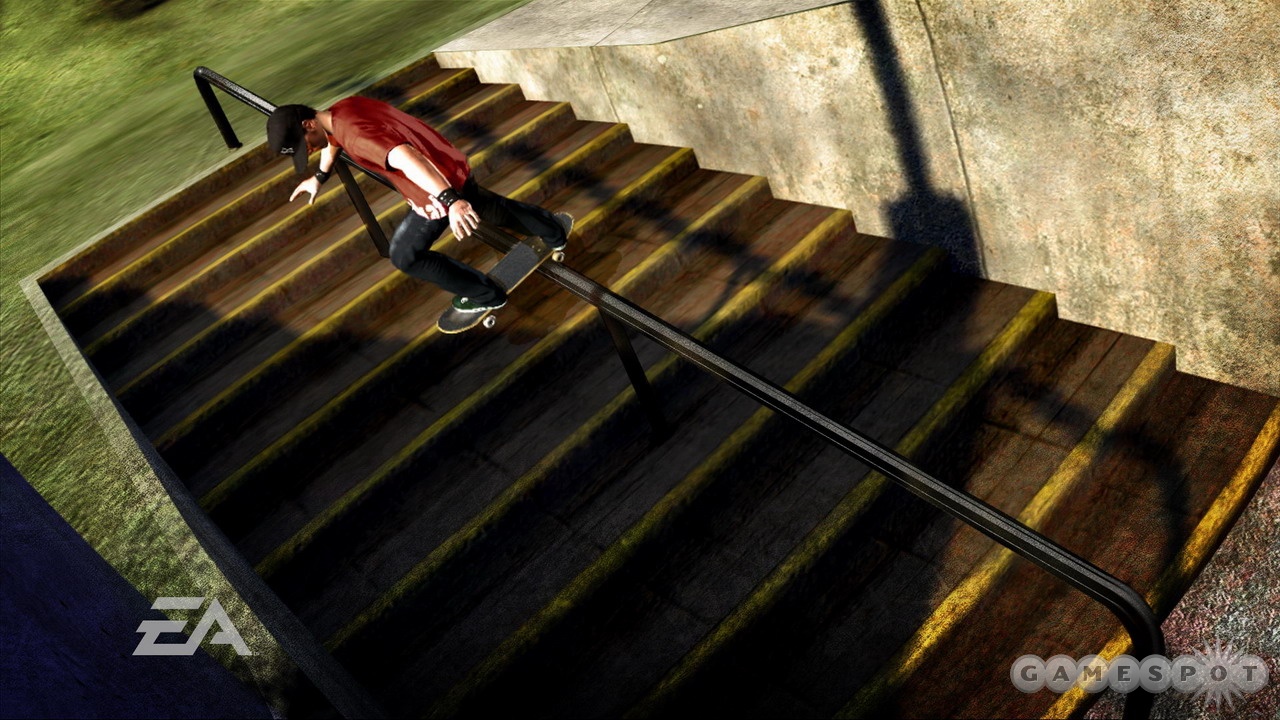Skate Hands-On
EA dares to tread where Tony Hawk has dominated for years. We take a first look at EA's next-generation skating game.
With the generation of skateboarding stars from the 1980s approaching middle age, it's interesting to see how the culture around skateboarding has thrived and evolved over the years. Certainly video games have had no small impact on keeping the sport of skateboarding alive, and now EA is getting into the skating mix with the upcoming release of Skate. We had a chance to check out an early build of Skate at an EA press event this week to see how EA's initial foray into the skateboarding world is shaping up.

The first thing that comes to mind when you play Skate is the long-running Tony Hawk series, and comparisons to that game are natural. However, and EA is quick to remind you of this, the developers behind Skate are striving to create a game that plays unlike any skating game you've played. Having gotten a taste of the gameplay ourselves, we're inclined to agree with them.
First, let's set the stage a bit. The game, due for release later this year, has been in the works since last year and will feature 19 real-life skate pros, such as Danny Way, Tommy Guerrero, and the truly odd Mark Gonzalez. While you'll eventually be able to skate all over a fictional city known as San Vanelona (a blend, in both name and design, of San Francisco, Vancouver, and Barcelona), the demo featured our lone grinder skating along in a near-empty skatepark. The park, an asphalt amalgam of rails, stairs, ledges, and bowls aplenty, gave us plenty of room to try out the different moves available to out skater, unobstructed by such nuisances as traffic or pedestrians. EA producers assured us that the city you will eventually skate in will be a much more active place, complete with plenty of obstacles to take advantage of (or avoid), as well as a computerized populace, which will demonstrate varying levels of tolerance for your skating ways.
From a control standpoint, Skate is very reminiscent of another EA game, Fight Night Round 3. As you might expect then, Skate relies heavily on the two analog sticks for the majority of the movements in the game. The left analog stick controls your skater's direction, and the right analog stick is responsible for the wealth of tricks you possess in your arsenal. Unlike the limited punch repertoire in Fight Night, there are a ton of tricks in Skate that you'll be able to pull off with the right stick by moving it in different directions. For example, a basic ollie is executed by pushing down and then up with the stick; you can do a nollie, essentially a reversed ollie, by moving the stick up then down. Moving the stick up and slightly to the left or right will cause your skater to perform basic kickflips or heelflips.

Skate's complexity comes from the variety of motions you can make with the right analog stick. For some tricks, you'll move the stick off at one angle then finish off by moving the stick in an entirely new angle. For others, you'll want to trace the outside of the analog stick's range of motion, which is similar to how you would pull off a haymaker punch. The idea here seems to be that a lot of different tricks are available under your right thumb. Indeed, EA had a small laminated poster on display that showed all of the different moves on the right analog stick. The key to nailing tricks is for you to be as accurate as possible with the right analog stick, though the intricacy of the controls means it will take an awful lot of practice to get the tricks you want.
Other controls in the game include the left and right triggers, which are used for grabbing the board with either your left or right hand. Interestingly, you can tweak your grab in midair by using the right analog stick for some extra variety on your trick. Manuals and reverse manuals are controlled by pulling back (or pushing forward) very slightly with the right stick; with a little practice we were able to land tricks into a manual, which feels pretty good, especially the first time you do it.
The A and B buttons are used to push you along and brake, respectively. And, honestly, this was the biggest thing that bugged us about Skate's controls. Unlike in other skating games, where realism is sacrificed a bit to more or less keep your skater moving at all times, you have to actively keep up your momentum in Skate by using the push button. A short tap of the A button will give you a quick boost, and holding down the button will give you a big shove; pushing forward with the left stick will make your skater crouch for even more speed. Clearly, EA is going for a more simulated skating experience in this regard, but at a certain point, we wanted to forget about propelling ourselves and just work on the tricks.

Despite this quirk, there's no denying that the game moves and animates beautifully, even at this early stage of development. For instance, when tacking a jump, the skater will automatically shift his weight in anticipation of where he will land; if you're jumping into a halfpipe, he will shift his weight forward to press the board at the correct angle, just as a real skater would do. These sorts of helpful assists are invisible when you're playing the game; the skater is merely reacting as you would expect him to react. Grinding rails is another good example. If you approach a rail at the correct angle and then ollie up in the air, the skater will land his edge and grind, his momentum carrying him forward appropriately. You can forget the button mashing because all you need for a good grind in Skate is a proper approach.
Still, sometimes you do mess up, and Skate has wipeouts nailed too. With the sound turned up, the sickening thud of the body nailing the asphalt is pretty brutal. We even managed to "rack" our skater on a failed grind attempt, which totally reminded us of this time back in eighth grade when we were trying to impress Alison Baird and...you know what? Let's save that story for another time. Regardless, the impressive body physics and spot-on sound effects make crashing nearly as unpleasant in the game as it is in real life.

All of these tricks would be pointless without some events to show them off in, and Skate looks to fit that bill as well. The demo build we played had a few events to compete in, such as video challenges, where you have to pull off a number of tricks within a certain amount of time while your tricks are being "recorded" on video (after all, if a skate trick happens but nobody is there to record it, did it really happen?). There are also photo challenges where you'll be able to take pictures of your skater in action. Speaking of recording, the game will also include a pretty cool replay feature, which will let you rewind the action and focus in on your best tricks. This is complete with a number of different camera angles and even a currently unspecified method of "sharing" your replay footage with your friends (presumably via the Xbox 360 and PlayStation 3's online capabilities). We'll have more details to come on that feature. We like the idea, but we hope the replay tool moves away from preset camera angles and frees the camera up completely for the user, which will make for cooler videos.
In all, Skate looks like an ambitious game for the folks at EA, who are treading on ground that the biggest name in the skating business (do we even need to mention his name?) has already treaded. With its complex trick system and emphasis on control and momentum, the game certainly has a unique approach, one that will be interesting to follow as we lead up to its release later this year.
Got a news tip or want to contact us directly? Email news@gamespot.com
Join the conversation